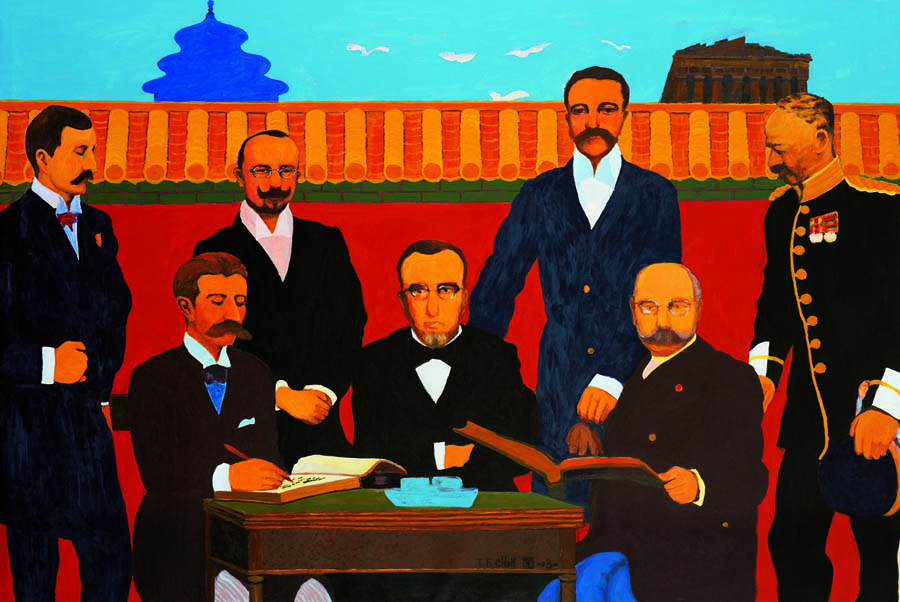
Lighting the Sacred Fire#08002 194 X 130 cm 畫布丙烯 2008 Fire – as the symbol of the beginning of human civilization-has had a vast and sacred context in Greece. To light and pass the sacred torch became an important religious rite in the ancient Greek Olympics.The Modern Olympic Games has inherited and adapted this sacred tradition as well, its process is as follows: 1) The International Olympic Committee grants the authority to light the sacred fire in Olympia. The fire stands for the noble goal of the Olympics-symbolizing Brightness, Friendship, Solidarity, Justice and Peace. 2) The sacred fire must be lit by a pure and clean Greek lady in front of the Temple of Hera, the Mother of the Greek Gods. It is taken from the sun with a focus-mirror. The torch is then sent to Athens by runners and then passed to the host city for the Olympics, to arrive before the Opening Ceremony. 3) The Olympic Games is opened by the lighting of the sacred fire by a torch-carrier. The fires need to keep burning during the entire event until the end of the Closing Ceremony. This exciting torch-passing ritual has become a celebrated event in itself, as crowds gather to watch and cheer (in person and at home). Oftentimes, there are several thousands of torch-carriers; for example in the 2004 Olympics in Athens, the torch passed through 5 continents, 27 countries and 33 cities with 3,600 athletes’ participation. In this painting, Dr. T.F. Chen condensed the ritual to that of a Greek lady in front of a Greek temple, lighting the sacred fire. Upon it he added the Temple of Heaven from Beijing, as well as five rings with white doves representing Peace. Many images on the canvas are cultural icons familiar to us. Thus, we see Dr. Chen’s “Neo-Iconography” style at work, creating a fascinating, new painting with a humanistic view – an “Arts for Humanity’s sake” instead of an “arts for arts’ sake.” |
Lighting the Sacred Fire

Olympics Coming, Flowers Blooming
March 2, 2015

